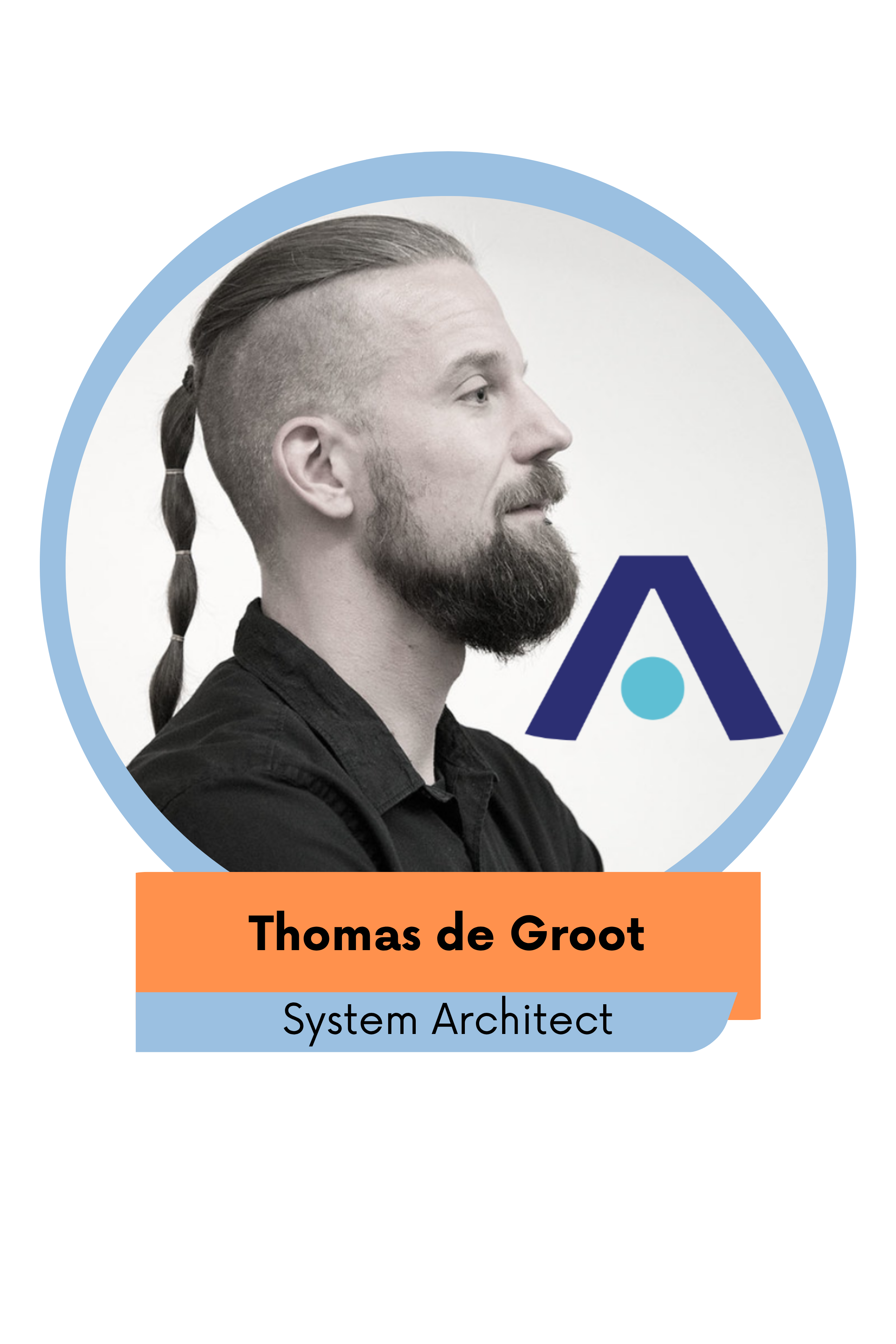Personal Information
- Name: Thomas de Groot
- Position/Title: Researcher, System Architect
- Department: Advanced Development Systems
Professional Background
Briefly describe your professional background and area of expertise:
I have a multidisciplinary background that spans Computer Science, Psychology, and Art. This unique combination allows me to approach system design with both technical rigor and human-centered sensitivity. My expertise lies in understanding how people interact with complex systems and translating that understanding into intuitive, adaptive technologies. Over the years, I’ve worked on projects ranging from serious gaming, cognitive modeling and interface design to real-time performance monitoring, always with a focus on enhancing the synergy between humans and systems.
What inspired you to pursue a career in this related field, e.g., aviation etc?:
My fascination with human-machine interaction began early, driven by a curiosity about how technology can amplify human capabilities rather than replace them. I’ve always been intrigued by the idea of machines not just responding to commands, but understanding context, emotion, and intent. Aviation, defense, and other high-stakes domains offer rich environments where this interplay is critical—and where thoughtful design can have profound impacts on safety, efficiency, and human well-being. That challenge is what drew me in and continues to inspire me.
“My fascination with human-machine interaction began early—driven by a curiosity about how technology can amplify human capabilities rather than replace them.”
Role in EPIIC
What is your role in the EPIIC project?
In the EPIIC project, I serve as both a researcher and system architect, focusing on human state monitoring within Thales-operated systems. My primary responsibility is the development of the HARMONY system—short for HumAn peRformance MonitOring and eNhancement sYstem. This system is designed to assess and support operator performance in real time, using biometric and behavioural data to adapt system responses dynamically. My role involves conceptual design, technical architecture, and ensuring that the system remains aligned with both operational needs and human factors principles.
Can you describe your main responsibilities and tasks?
My main responsibilities include designing and refining the architecture of the HARMONY system, which monitors and enhances human performance in operational environments. I collaborate with an interdisciplinary team to integrate biometric data, cognitive models, and adaptive interfaces that support operators in real-time. I also conduct research on human-machine interaction and translate findings into system requirements and design improvements.
How does your work contribute to the overall goals of the EPIIC project?
My work supports EPIIC’s mission to improve operational efficiency and safety by ensuring that human factors are central to system design. By developing tools that monitor and respond to operator states, we help create systems that are not only technically robust but also cognitively and emotionally attuned to their users.
“One of our most significant milestones was collecting biodata from around one hundred participants, enabling the development of a cognitive workload model for adaptive human-machine collaboration.”
Project Insights
What do you find most exciting about working on the EPIIC project?
The most exciting aspect is the opportunity to bridge disciplines. Combining psychology, technology, and design to create systems that truly understand and support their users. It’s rewarding to see abstract concepts like “human state” translated into tangible tools that make a real difference.
What has been the most challenging aspect of your work on this project?
Balancing technical feasibility with psychological nuance is a constant challenge. Human behaviour is complex and context-dependent, so designing systems that can adapt intelligently without overwhelming the user requires careful calibration and continuous iteration.
Can you share a significant milestone or achievement your team has reached so far?
One of our most significant milestones was successfully collecting biodata from approximately one hundred participants. This robust dataset enabled us to develop a cognitive workload model, marking a crucial advancement toward adaptive human-machine collaboration. It laid the foundation for systems that can intelligently respond to human cognitive states in real time.
“Balancing technical feasibility with psychological nuance is a constant challenge—designing systems that adapt intelligently without overwhelming the user requires careful calibration and continuous iteration.”
Personal Experience
What have you learned during your time working on EPIIC?
I’ve learned how crucial interdisciplinary collaboration is when tackling complex problems. Working with experts from different fields has broadened my perspective and deepened my appreciation for the nuances of human-centered design.
How has this project influenced your professional development?
EPIIC has sharpened my skills in systems thinking and expanded my understanding of human factors engineering. It’s also reinforced the importance of empathy in technology design. Something I now carry into every project I work on.
Fun Facts
What do you enjoy doing in your free time?:
I enjoy climbing, hiking, and exploring experimental music. These activities help me recharge and often inspire creative solutions in my professional work.
Share a fun fact about yourself that your colleagues might not know:
I once built an interactive art installation where the user experienced an out of body/3rd person view. It was featured in a couple of local art shows and sparked some fascinating conversations about the intersection of art and technology.
Closing Thoughts
Is there anything else you would like to share about your experience with the EPIIC project?
EPIIC has been more than just a project—it’s a proving ground for ideas that could shape the future of human-machine interaction. I’m proud to be part of a team that’s pushing boundaries and redefining what’s possible when technology truly serves people.
